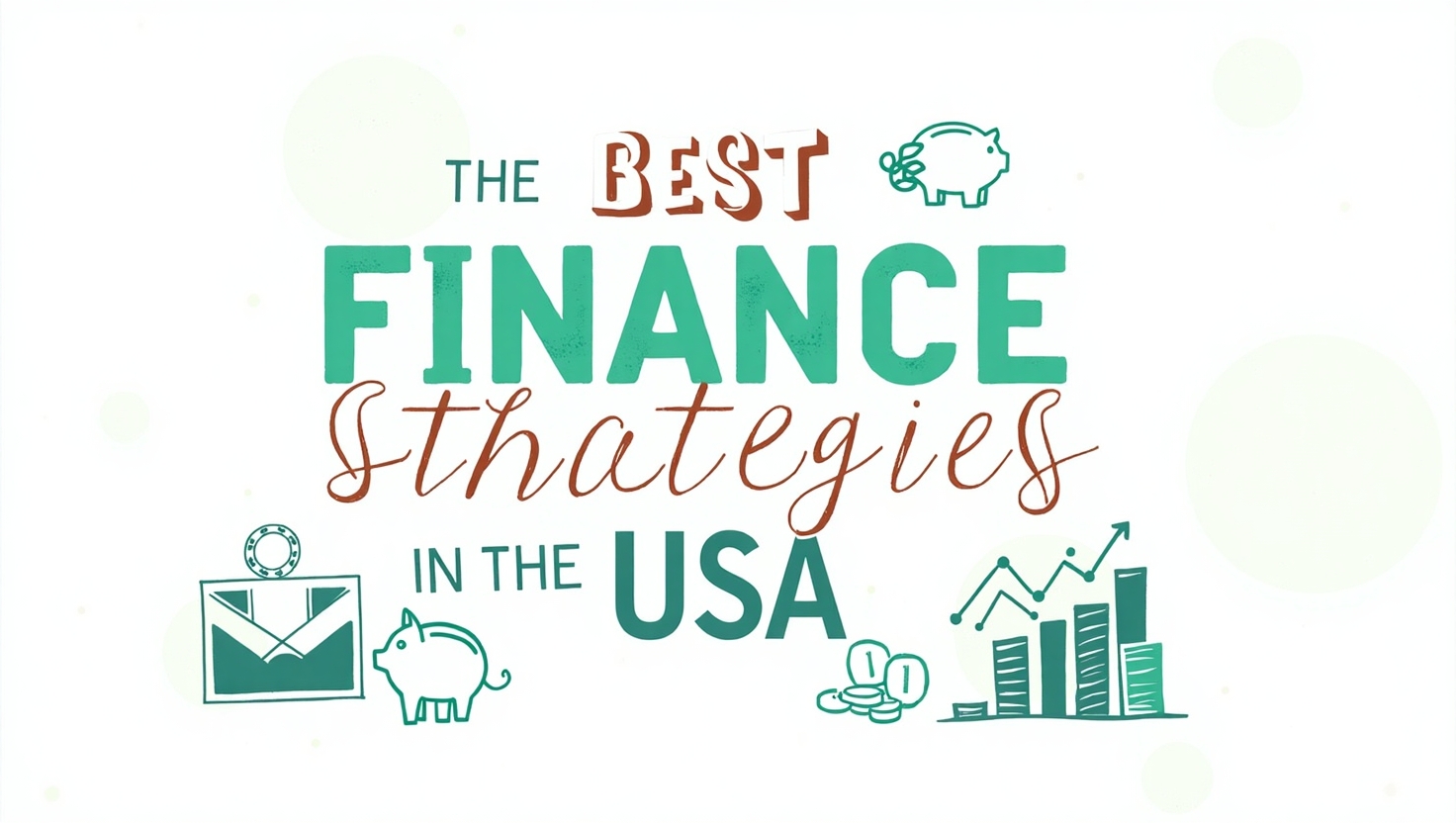Best Personal Finance Strategies in USA: Build Wealth and Achieve Financial Freedom
Managing your money wisely is one of the most important life skills you can master. Whether you’re living paycheck to paycheck or already building wealth, applying the best personal finance strategies in USA can help you make smarter decisions, reduce financial stress, and secure your future.
In this guide, we’ll explore time-tested and expert-recommended personal finance strategies tailored for Americans in 2025. Let’s dive into what actually works—and why it matters more than ever.
![]()
1. Create and Follow a Budget Consistently
One of the best personal finance strategies in USA starts with simple budgeting. A well-planned budget puts you in control of your income and expenses and ensures you live within your means.
✅ How to start:
-
Track your monthly income after taxes.
-
List and categorise your expenses (fixed, variable, discretionary).
-
Use tools like Mint, YNAB (You Need a Budget), or EveryDollar.
-
Stick to the 50/30/20 rule: 50% needs, 30% wants, 20% savings/debt repayment.
Consistency is the key—adjust your budget monthly and keep it realistic.
2. Build a Strong Emergency Fund
Life is unpredictable. Car repairs, medical bills, or job loss can happen anytime.
📌 Strategy:
-
Save 3–6 months of living expenses in a high-yield savings account.
-
Start small—aim for $1,000 as a beginner goal.
-
Automate your savings so you don’t forget or overspend.
An emergency fund acts as a safety net and is one of the best personal finance strategies in USA to protect against financial setbacks.
3. Pay Down High-Interest Debt First
Credit card debt is a major issue in the US, with interest rates averaging above 20%. Paying off high-interest debt quickly helps you save thousands over time.
🔥 Two popular methods:
-
Debt Avalanche: Pay off the highest-interest debts first.
-
Debt Snowball: Pay smallest debts first to build momentum.
Use debt consolidation only if it reduces your total interest. Reducing debt is a critical step in any effective personal finance plan.
4. Maximise Retirement Contributions Early
The earlier you start saving for retirement, the more you’ll benefit from compound interest.
💼 Retirement vehicles in the US:
-
401(k): Offered by employers; aim to contribute at least enough to get the company match.
-
Traditional or Roth IRA: Excellent for tax advantages and long-term growth.
-
HSA (Health Savings Account): A triple-tax-benefit tool if you have a high-deductible health plan.
Contributing regularly, even in small amounts, is one of the best personal finance strategies in USA for securing your golden years.
5. Automate Your Finances
Automation ensures you never miss payments or forget to save.
🔁 What you can automate:
-
Bill payments (credit cards, utilities, subscriptions)
-
Monthly savings to emergency and retirement accounts
-
Investments into index funds or ETFs
Automation removes emotion from money decisions and builds discipline over time.
6. Invest in Low-Cost Index Funds and ETFs
Investing can be intimidating, but it’s essential for long-term wealth. Index funds and ETFs are cost-effective, diversified, and beginner-friendly.
📊 Why they work:
-
Lower fees than actively managed funds
-
Broad exposure to the market
-
Historically strong long-term performance
Consider using platforms like Fidelity, Vanguard, or Charles Schwab. This passive investing strategy is one of the smartest and best personal finance strategies in USA today.
7. Improve and Maintain a High Credit Score
A good credit score opens doors—lower interest rates, better loan terms, and more financial flexibility.
💡 Tips to boost your score:
-
Pay bills on time every month
-
Keep credit card balances under 30% of the limit
-
Limit new credit applications
-
Monitor your credit with AnnualCreditReport.com
A score of 700+ is generally considered good. Make your credit work for you, not against you.
8. Set Clear Financial Goals
Saving without a goal can feel pointless. Having specific financial targets helps you stay motivated and focused.
🎯 Set goals like:
-
Saving $20,000 for a house down payment
-
Paying off $10,000 in student loans in 2 years
-
Building a $50,000 retirement fund by age 35
Use SMART goals (Specific, Measurable, Achievable, Relevant, Time-bound) for better results.
9. Review and Adjust Your Financial Plan Annually
Your life changes—so should your financial plan. Set a reminder to do an annual checkup.
📆 Annual review checklist:
-
Update your budget
-
Reassess insurance policies
-
Rebalance investments
-
Adjust savings goals based on life changes
This habit keeps you aligned with your long-term objectives and is one of the best personal finance strategies in USA for staying on track.
10. Learn to Live Below Your Means
Lifestyle inflation is the silent killer of wealth. As your income rises, don’t inflate your spending to match.
✂️ Simple practices:
-
Avoid unnecessary upgrades
-
Wait 30 days before making non-essential purchases
-
Focus on value-based spending: Spend on what matters most
Living below your means doesn’t mean deprivation—it means making room for financial freedom.
11. Diversify Your Income Streams
Relying solely on one income source is risky in today’s economy. Consider side hustles or passive income options.
💼 Income ideas:
-
Freelancing or consulting
-
Investing in dividend stocks
-
Starting a small online business
-
Renting out property or a spare room (Airbnb)
Building multiple income streams strengthens your financial position over time.
12. Stay Financially Educated
Knowledge is power—especially when it comes to money.
📚 Top resources:
-
Books: “The Millionaire Next Door”, “I Will Teach You to Be Rich”
-
Podcasts: “ChooseFI”, “The Dave Ramsey Show”
-
Blogs: Mr. Money Mustache, NerdWallet, The Penny Hoarder
Regularly consuming financial content is one of the best personal finance strategies in USA to stay ahead of economic changes.
13. Protect Your Assets with Insurance
Having the right insurance can mean the difference between financial stability and ruin.
🛡 Essential coverage includes:
-
Health insurance
-
Auto insurance
-
Homeowners or renters insurance
-
Life insurance (if you have dependents)
-
Disability insurance
Don’t overlook this—insurance is a core pillar of financial planning.
14. Practice Tax-Efficient Strategies
Taxes eat into your earnings. Plan smartly to reduce your tax burden.
🧾 Consider:
-
Maxing out tax-deferred accounts (401k, IRA)
-
Contributing to HSA for healthcare savings
-
Tracking deductions and credits (e.g., child tax credit, student loan interest deduction)
Consider consulting a certified financial planner or tax advisor for personalised advice.
15. Teach Financial Responsibility to Your Family
Financial success is even better when it’s shared. Teach your spouse, children, and even friends about smart money habits.
👨👩👧👦 Start with:
-
Family budgeting sessions
-
Giving kids an allowance for chores
-
Introducing basic investment principles
-
Talking openly about financial goals
Creating a financially aware household is one of the best personal finance strategies in USA for generational wealth building.
✅ Conclusion: Start Smart, Stay Consistent
Mastering money doesn’t require earning six figures or a finance degree. With discipline, knowledge, and consistency, anyone can apply the best personal finance strategies in USA and see real results. Start small, stay consistent, and never stop learning. Your future self will thank you.
❓ FAQs – Best Personal Finance Strategies in USA
1. What is the first step to better personal finance in the USA?
Start by creating a detailed monthly budget and tracking all your income and expenses.
2. How much of my income should I save?
Aim to save at least 20% of your income—split between emergency, retirement, and other goals.
3. Is investing risky for beginners?
There’s always some risk, but investing in diversified index funds is generally a safe, long-term strategy.
4. Should I pay off debt before investing?
Pay off high-interest debt first (like credit cards), then begin investing for long-term growth.
5. What are good financial goals for 2025?
Saving for a home, building a $10,000 emergency fund, or contributing the maximum to your 401(k) are all great goals.

